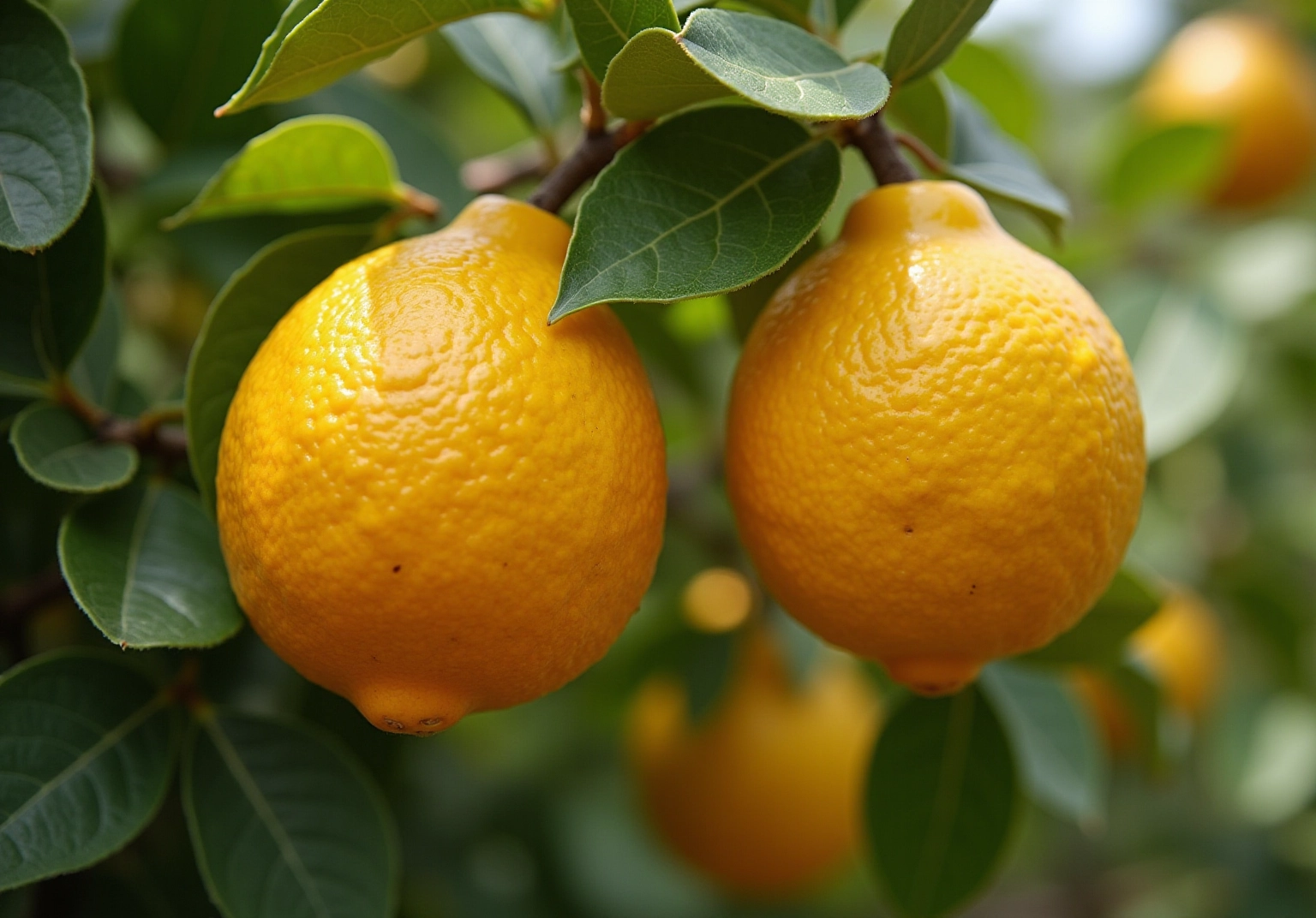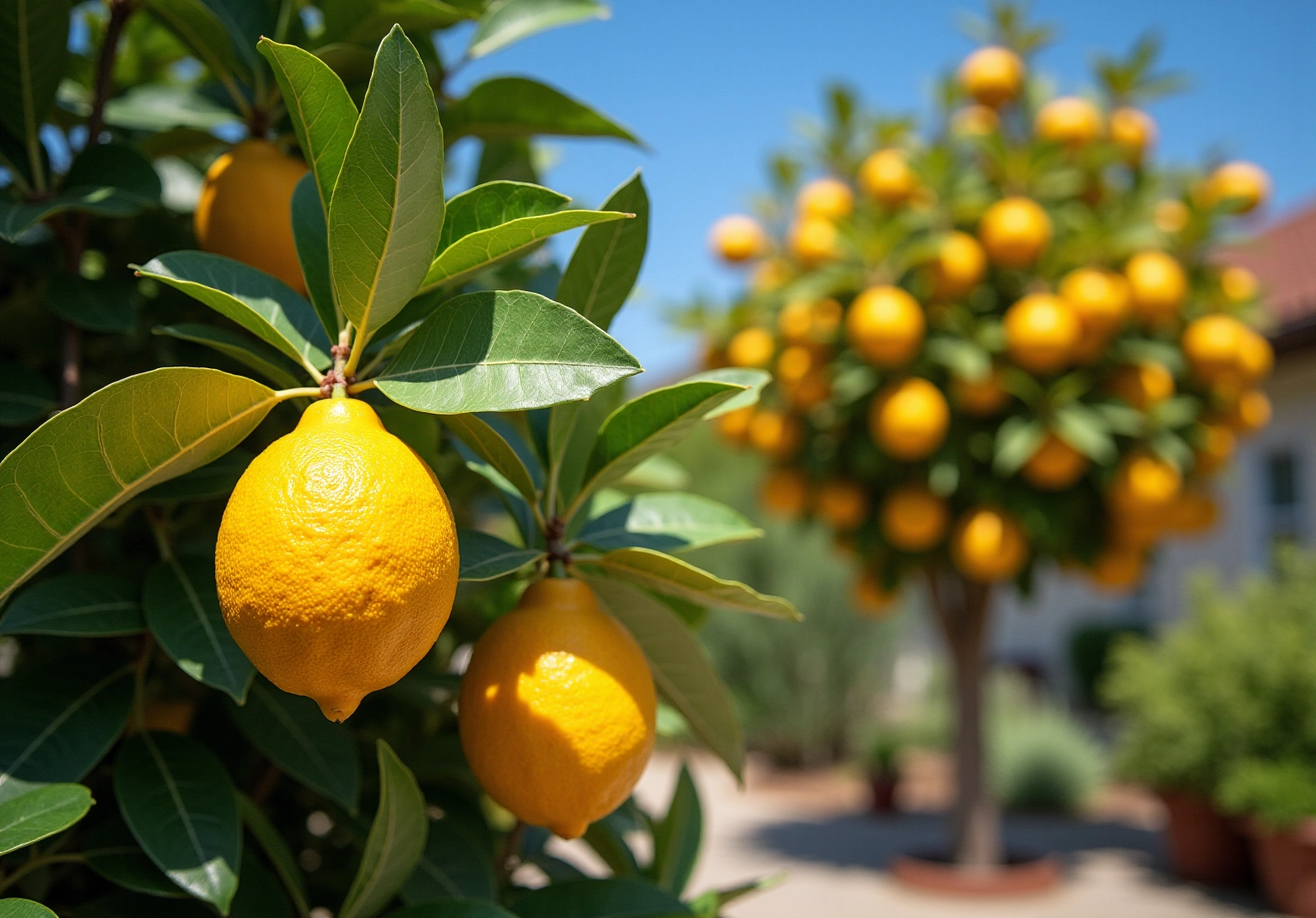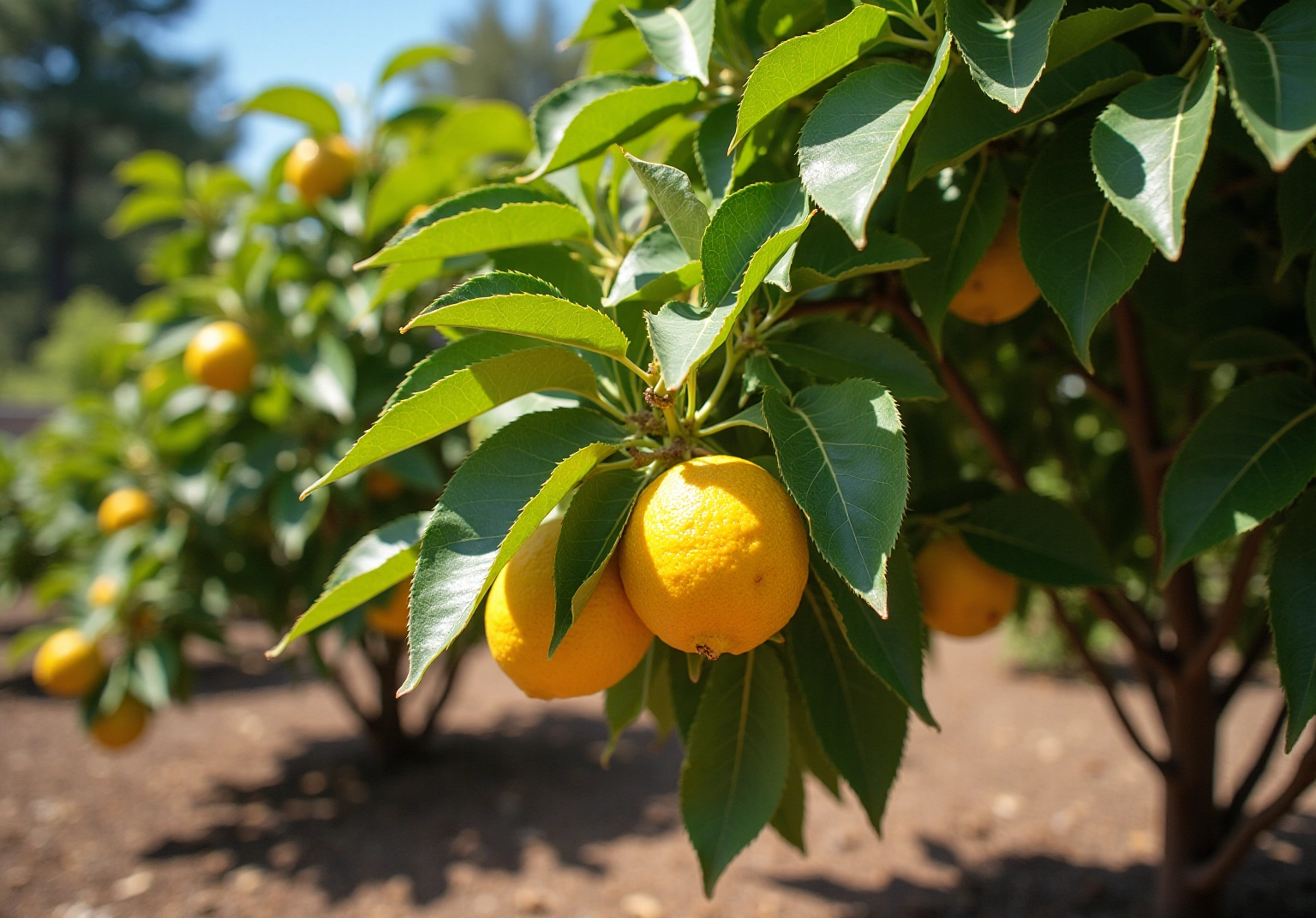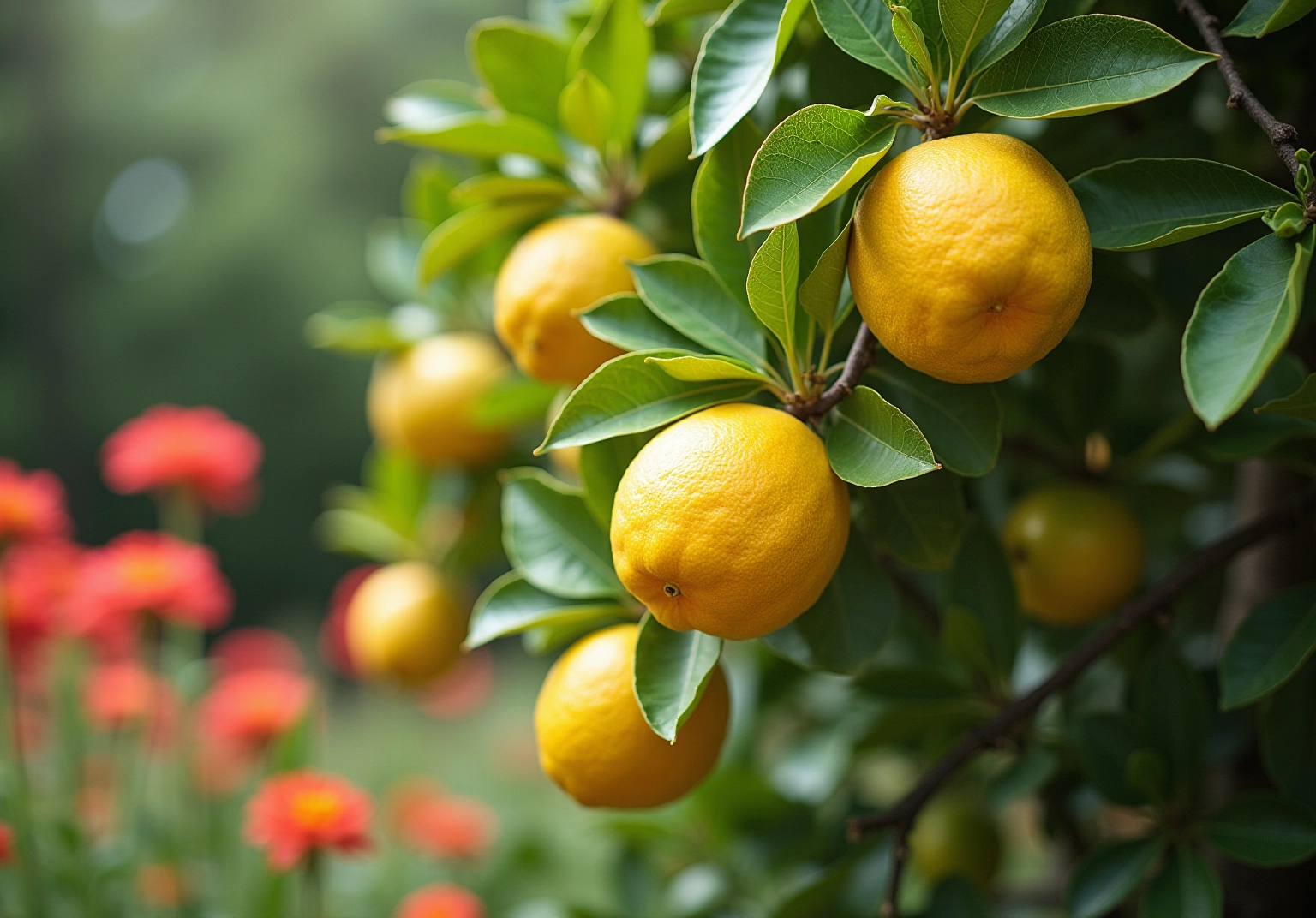
Eureka vs Meyer Lemon Tree: Key Differences and Care Tips
Share
The world of citrus is abundant with flavors and varieties, yet few comparisons generate as much interest among gardeners and culinary enthusiasts as that of the Eureka and Meyer lemon trees. Each type offers its own unique characteristics, from the tangy zest of the Eureka to the sweet, floral notes of the Meyer. This article explores the essential differences between these two beloved lemon varieties, providing valuable insights into their care requirements and the benefits they deliver. With such distinct profiles, discerning which lemon tree will best meet the needs of home gardeners and chefs alike is essential.
🍋 Ready to grow a lemon tree?
Explore our Lemon Trees for sale at Everglades Farm.

The article provides a comprehensive comparison of the Eureka and Meyer lemon trees, emphasizing their distinct differences in flavor, appearance, and care requirements.
- Eureka lemons are characterized by their tartness and larger size, which makes them particularly suitable for cooking.
- In contrast, Meyer lemons are sweeter and more compact, making them ideal for fresh consumption and smaller gardens.
This comparison offers essential insights for gardeners, guiding them in selecting the right lemon variety according to their specific needs.
Overview of Eureka and Meyer Lemon Trees
The eureka vs meyer lemon tree and other citrus trees represent two notable varieties, each offering distinct flavors and culinary applications. When considering the differences in flavor and appearance, the Eureka variety is a classic choice, recognized for its vibrant yellow, medium to large fruit with a thick, bumpy skin and a distinctly sour taste, especially in the context of eureka vs meyer lemon tree. This high-acid citrus fruit is a staple in grocery stores, particularly well-suited for cooking and baking, making it a favorite among chefs and home cooks alike. Historically, Eureka citrus fruits were introduced to the U.S. in the mid-1800s from Italy, enriching their background further.
In contrast, when comparing the eureka vs meyer lemon tree, the Meyer lemon, a hybrid between a true lemon and a mandarin orange, presents a sweeter, less acidic profile. Its smooth, thin skin, often tinged with a slight orange hue, enhances its appeal in desserts and beverages, allowing its unique flavor to shine. Typically, these citrus fruits contain as many as 10 seeds each and can produce thousands of fruits throughout their lifespan, with plants reaching heights of 6 to 10 feet when fully grown. Notably, citrus plants generally begin to bear fruit within four years, making them a gratifying option for patient gardeners.
Both the eureka vs meyer lemon tree varieties thrive in warm climates; however, they exhibit different growth habits and care requirements. For instance, while certain varieties can reach heights of 20 feet, Meyer types are bushier and more compact, making them ideal for smaller gardens or container planting. Additionally, mature citrus plants can yield up to 85-150 kg (190-330 lb) each year under optimal conditions, particularly for specific varieties. Understanding these distinctions is essential for gardeners aiming to cultivate these citrus plants effectively.

Characteristics of Eureka and Meyer Lemon Trees
Lemonade citrus trees typically reach heights of 10 to 20 feet and exhibit a bushy, open growth style. These trees cultivate large, juicy citrus fruits that are oval-shaped and have a thick, textured rind. Known for their strong, tart flavor, these fruits are a staple in many kitchens. They develop at an average pace of 1-2 feet annually and may require approximately three years to bear fruit following planting. Thriving in hardiness zones 9-11, lemonade citrus trees are well-suited for warmer climates.
In contrast, another variety of citrus trees is smaller, typically attaining heights of 6 to 10 feet, and possesses a more compact, shrub-like appearance. The fruit from these trees is rounder, featuring a smooth, thin skin that ripens to a deep yellow with orange undertones. These citrus fruits are sweeter and less acidic than other varieties, making them a favorite for fresh consumption and culinary applications where a milder flavor is desired.
While certain citrus fruits are perfect for cooking and baking due to their tart flavor, another variety is frequently utilized in sweets and drinks. Both varieties are susceptible to common pests and diseases, such as citrus canker and root rot, which gardeners should monitor. Understanding these distinctions, along with the significance of pruning for sustaining plant health and fruit yield, is essential for gardeners aiming to choose the appropriate citrus variety for their specific requirements.

Care Requirements for Growing Eureka vs Meyer Lemon Trees
Both types of citrus trees thrive in full sun, ideally receiving 6 to 8 hours of direct sunlight each day. These citrus fruits exhibit higher cold resilience, making them suitable for a broader range of climates. Eureka vs Meyer lemon tree flourish in well-draining, slightly acidic soil, with an optimal pH between 6.0 to 7.0. They require regular watering, especially during dry periods, and are more susceptible to wind damage, necessitating protection in exposed locations. Conversely, other citrus fruits prefer similar soil conditions but can tolerate slightly more moisture and are generally less vulnerable to pests and diseases, simplifying care for novice gardeners.
Citrus trees typically take about 3 to 5 years to reach their full height, so gardeners should set realistic growth expectations. During warm months, the eureka vs meyer lemon tree requires watering every 7 to 10 days to maintain adequate moisture levels. Additionally, special care is essential in winter, including moving potted trees indoors and insulating in-ground trees to shield them from cold temperatures. Fertilization plays a crucial role for both varieties; applying a balanced fertilizer during the growing season promotes healthy growth and boosts fruit production.
Regular pruning is vital for controlling size and encouraging bushier growth, which is advantageous for fruit yield. By following these care tips, gardeners can ensure that their citrus trees thrive and produce an abundant harvest.

Benefits of Choosing Eureka or Meyer Lemon Trees
Choosing these citrus fruits provides a traditional, tangy taste that enhances culinary applications, from cooking and baking to crafting refreshing drinks. Their high acidity renders them particularly suitable for recipes demanding a robust citrus flavor. Additionally, these citrus fruits are rich in vitamin C and dietary fiber, contributing to immune support and healthy skin. They are known for their prolific production, offering a steady supply of fruit year-round, which is an important advantage for home gardeners. Moreover, Eureka citrus trees attract pollinators, fostering biodiversity in gardens, and they possess practical benefits such as abundant yields and minimal thorns, simplifying management. Thriving in full sun, they require moderate watering—essential care tips for prospective growers.
In contrast, these citrus fruits are celebrated for their sweet, floral flavor profile, making them a favored choice for desserts, cocktails, and fresh consumption. Their compact growth habit and ornamental qualities render them ideal for container gardening, enabling those with limited outdoor space to cultivate their own citrus. These fruits flourish in bright environments and are often preferred for their aesthetic appeal in gardens.
Ultimately, the choice between the eureka vs meyer lemon tree depends on personal taste preferences and specific gardening conditions. Both varieties present unique benefits that can enhance any home garden, offering not only delicious fruit but also the pleasure of growing citrus at home.

Conclusion
Eureka and Meyer lemon trees each bring unique flavors and characteristics to the gardening table, making them both appealing choices for citrus enthusiasts. The Eureka lemon tree is celebrated for its classic tartness and robust culinary applications, while the Meyer lemon tree offers a sweeter, less acidic alternative that is perfect for desserts and beverages. Understanding these distinctions allows gardeners to select the variety that best suits their taste preferences and garden conditions.
Key insights into their growth habits reveal that:
- Eureka trees tend to be taller and more traditional in form.
- Meyer trees are compact and bushy, making them ideal for smaller spaces.
Both varieties thrive in similar environmental conditions, requiring ample sunlight and well-draining soil. However, they differ in their care needs and productivity. By following proper watering, fertilization, and pruning guidelines, gardeners can ensure a fruitful harvest from either type.
Ultimately, the decision between Eureka and Meyer lemon trees hinges on personal taste and gardening goals. Both varieties offer delicious fruits, aesthetic appeal, and the joy of growing citrus at home. Embracing the unique attributes of each tree can enhance culinary experiences and contribute to a vibrant and fruitful garden. Whether opting for the zesty Eureka or the sweet Meyer, the choice promises a rewarding gardening journey filled with the delightful flavors of homegrown citrus.
🍋 Elevate Your Garden with the Perfect Lemon Tree!
Choose between the zesty Eureka or the sweet Meyer and start your citrus journey today!
👉🏻 Buy Eureka Lemon Tree
👉🏻 Buy Meyer Lemon Tree
👉🏻 Explore Lemons & Limes Tree Collection
👉🏻 Explore Citrus Tree Collection
👉🏻 About Everglades Farm
Frequently Asked Questions
What are the main differences between Eureka and Meyer lemon trees?
The Eureka lemon tree produces medium to large, vibrant yellow fruit with a thick, bumpy skin and a distinctly sour taste, while the Meyer lemon tree, a hybrid of a true lemon and a mandarin orange, has a sweeter, less acidic flavor and smooth, thin skin often tinged with orange.
What is the historical background of the Eureka lemon?
The Eureka lemon was introduced to the U.S. in the mid-1800s from Italy, contributing to its rich historical background.
How many seeds do Meyer lemons typically contain?
Meyer lemons typically contain as many as 10 seeds each.
How tall do Meyer lemon trees grow?
Meyer lemon trees can reach heights of 6 to 10 feet when fully grown.
How long does it take for citrus plants to bear fruit?
Citrus plants generally begin to bear fruit within four years.
What are the ideal growing conditions for both Eureka and Meyer lemon trees?
Both varieties thrive in warm climates, but they have different growth habits and care requirements.
How much fruit can mature citrus plants yield under optimal conditions?
Mature citrus plants can yield up to 85-150 kg (190-330 lb) each year under optimal conditions.
What are the advantages of growing Meyer lemon trees in smaller spaces?
Meyer lemon trees are bushier and more compact, making them ideal for smaller gardens or container planting.

